Notes
War Vs. Summer Camp: Hipstamatic Debate Just More Distraction Game?
“A Grunt’s Life” was a lighter feature story within the context of The Times’s larger “Year at War” project, following the First Battalion, 87th Infantry of the 10th Mountain Division in northern Afghanistan. This essay was not a news story. The reporter, James Dao, and I had racked our brains trying to figure out how to tell the story after having been on so many missions that often go nowhere and have no clearly defined story arc.
We spent so much time with these men. They had become so comfortable with us that we were given a rare and honest glimpse into their lives. For us, it sometimes resembled a summer camp with guns more than a military operation.
— Damon Winter/Lens Blog
*************
What App Did You Use in the War, Daddy?
It doesn’t bother me all that much that Damon Winter shot “A Grunt’s Life” using an iPhone with a Hipstamatic app (backstory and Winter’s response). What does bother me is how much the impassioned debate surrounding the aesthetics of Winter’s images takes place at the expense of their content. I’m not saying the Hipstamatic debate doesn’t raise issues over how, and how seriously the viewer percieves the content. What I am taking note of is how the this debate is taking place, in large part, at the expense of the actual editorial content. In my mind, this discussion then becomes just one more instance where the Afghan War, and specific visuals that have found their way into the media stream — toned or not toned, bordered or not bordered, more or less blurry– are either ignored, taken for specimens or, almost comically subsumed in a formalist debate over whatever-the-heck-war scene feels more real or surreal.
Looking at these photos, what I can’t help seeing (and wishing others did, too) is how our view of the war is mediated and co-opted by: the largely unquestioned practice of embedding, the predominance of the “human interest” story at the expense of a news narrative and any contextualization of the larger battle, and the pull to be fanciful.
Considering the photos themselves, I’m not sure what the photo above is supposed to tell us of the war. Is it about power and deification — the American fighter in Afghanistan as Transformer? or our team’s moral or spiritual impetus in the embodiment of pure light? Or, are we aliens? Cool and awesome isn’t doing it for me.
I’ve got two hang ups with these images. First, they exemplify the major payoff for the military in the canon of post-9/11 war photography, the photo setting up an intense emotional identification with U.S. soldiers divorced from their identity as the embodiment of the U.S. war machine. Second, these photos play on another trend in war coverage over the past few years, which is the transformation of the soldier and killing agents (the gun notwithstanding) into innocent man-child. “The boys sleeping” has been a popular motif. Often, these photos have a homo-erotic resonance to them, although it’s much more comfortable thinking: “puppies.”
Perhaps the color saturation and the “back yard” feel of the Hipstamatic app does amplify the sense of fancy here. Because the mundanity of troop life in Afghanistan has been a greater rather than lesser narrative in the war coverage, however, what I mostly get here — and it’s worthy to some degree — is the message that the visual diet of this war has equated all too much with stretching dogs and roosters.
(Photos: Damon Winter/New York Times. Caption 1: Private First Class David Gedert put on his gear in the early morning sunlight in a seized compound where Delta Company 2nd platoon stayed and fought for six days in Nahr-i-Sufi in Kunduz province in Northern Afghanistan. Caption 2: After marching for five hours through the darkness of the early morning the soldiers gathered together to rest in a tiny room after setting up their fighting position inside a seized compound. The soldiers packed in close together to use each other’s body heat in the coldest part of the morning. Caption 3: PFC Christopher “Bunga” Daniel rests with Specialist Joshua Chamberlin, the platoon medic at the compound. Caption 4: Red, who follows 2nd platoon around on patrols, made his way to the village two miles away from the ANP district headquarters and spent several days with the men there. Here he stretches, next to a litter loaded with MRE trash and water bottles ready to be taken out of the compound.)
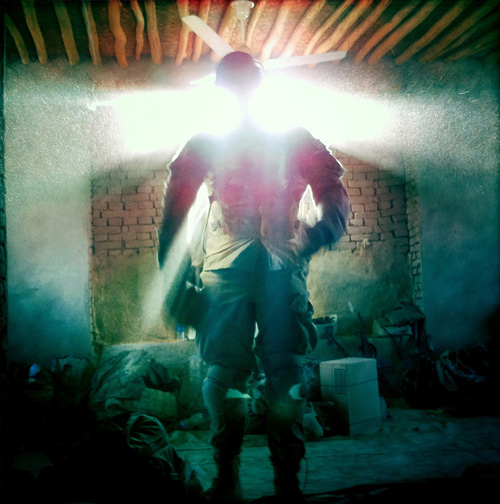
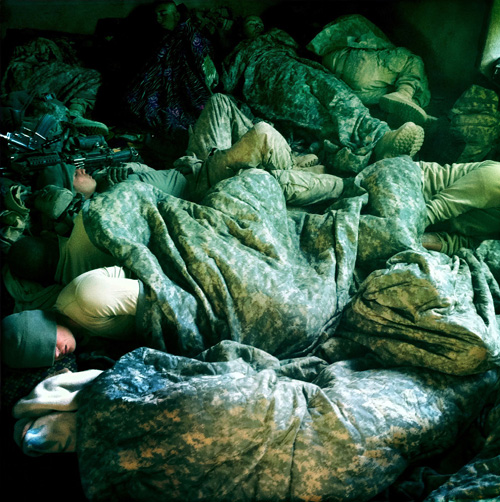
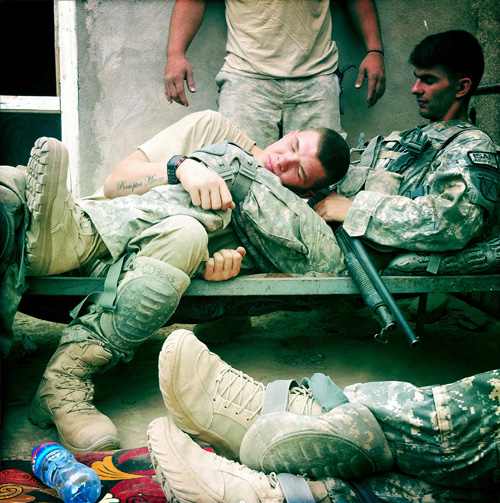
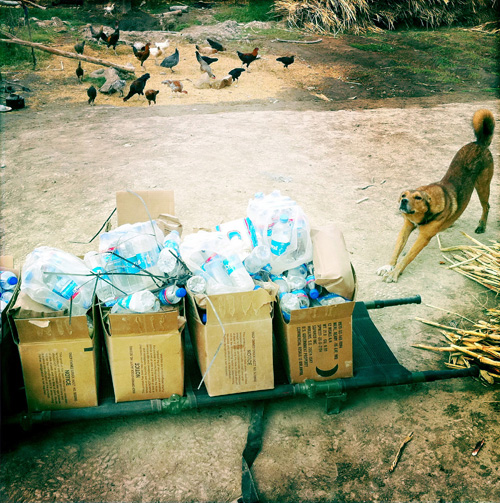
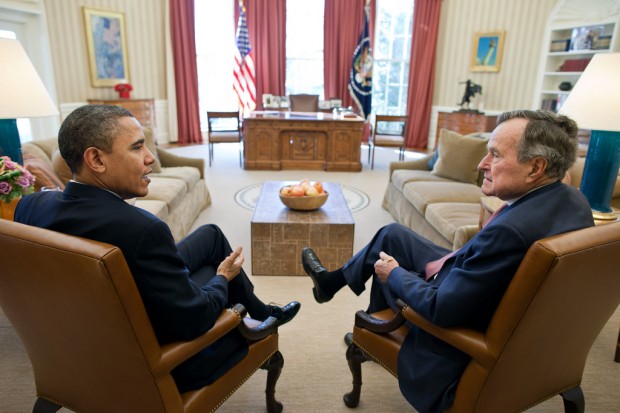
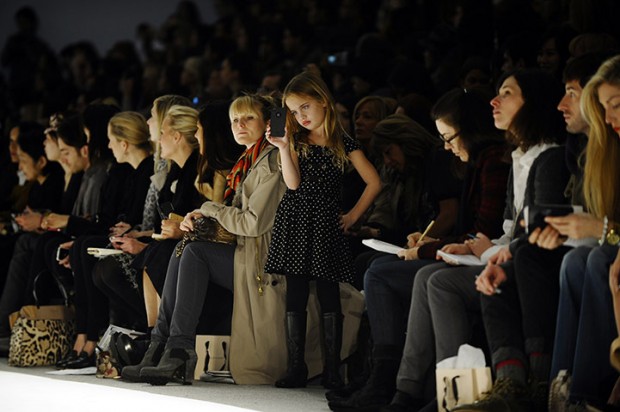
Reactions
Comments Powered by Disqus